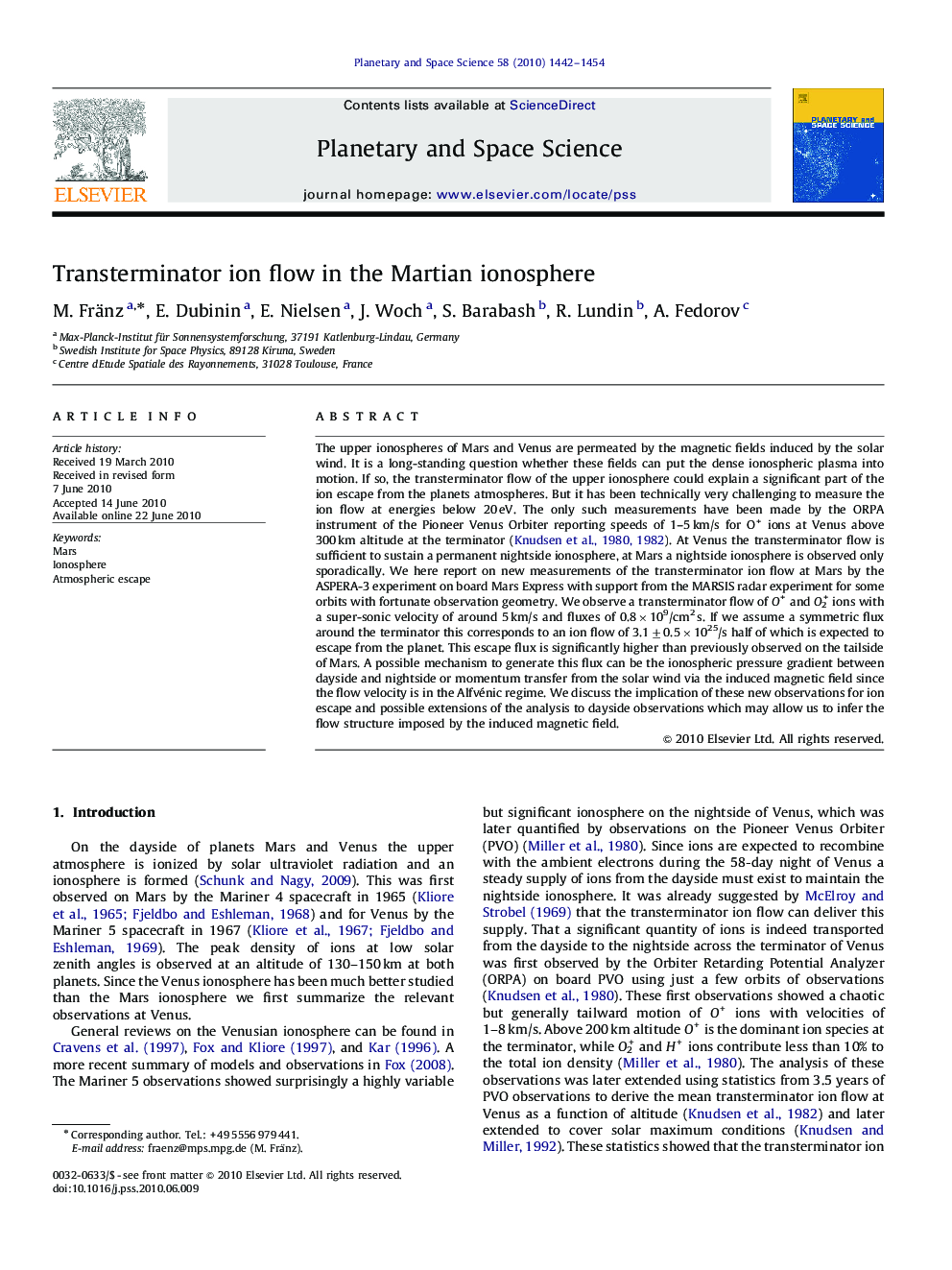| Article ID | Journal | Published Year | Pages | File Type |
|---|---|---|---|---|
| 1781973 | Planetary and Space Science | 2010 | 13 Pages |
The upper ionospheres of Mars and Venus are permeated by the magnetic fields induced by the solar wind. It is a long-standing question whether these fields can put the dense ionospheric plasma into motion. If so, the transterminator flow of the upper ionosphere could explain a significant part of the ion escape from the planets atmospheres. But it has been technically very challenging to measure the ion flow at energies below 20 eV. The only such measurements have been made by the ORPA instrument of the Pioneer Venus Orbiter reporting speeds of 1–5 km/s for O+ ions at Venus above 300 km altitude at the terminator (Knudsen et al., 1980 and Knudsen et al., 1982). At Venus the transterminator flow is sufficient to sustain a permanent nightside ionosphere, at Mars a nightside ionosphere is observed only sporadically. We here report on new measurements of the transterminator ion flow at Mars by the ASPERA-3 experiment on board Mars Express with support from the MARSIS radar experiment for some orbits with fortunate observation geometry. We observe a transterminator flow of O+ and O2+ ions with a super-sonic velocity of around 5 km/s and fluxes of 0.8×109/cm2 s. If we assume a symmetric flux around the terminator this corresponds to an ion flow of 3.1±0.5×1025/s half of which is expected to escape from the planet. This escape flux is significantly higher than previously observed on the tailside of Mars. A possible mechanism to generate this flux can be the ionospheric pressure gradient between dayside and nightside or momentum transfer from the solar wind via the induced magnetic field since the flow velocity is in the Alfvénic regime. We discuss the implication of these new observations for ion escape and possible extensions of the analysis to dayside observations which may allow us to infer the flow structure imposed by the induced magnetic field.
